A previous answer has given a valid solution using angles. This answer will present an alternative method.
The orthonormal basis vectors, renaming them F = lookAt, R = sideaxis, U = rotatedup, directly form the columns of the 3x3 rotation matrix which is equivalent to your desired quaternion:

Multiplication with a vector is equivalent to using said vector's components as the coordinates in the camera's basis.
A 3x3 rotation matrix can be converted into a quaternion without conversion to angles / use of costly trigonometric functions. Below is a numerically stable C++ snippet which does this, returning a normalized quaternion:
inline void CalculateRotation( Quaternion& q ) const {
float trace = a[0][0] + a[1][1] + a[2][2];
if( trace > 0 ) {
float s = 0.5f / sqrtf(trace + 1.0f);
q.w = 0.25f / s;
q.x = ( a[2][1] - a[1][2] ) * s;
q.y = ( a[0][2] - a[2][0] ) * s;
q.z = ( a[1][0] - a[0][1] ) * s;
} else {
if ( a[0][0] > a[1][1] && a[0][0] > a[2][2] ) {
float s = 2.0f * sqrtf( 1.0f + a[0][0] - a[1][1] - a[2][2]);
q.w = (a[2][1] - a[1][2] ) / s;
q.x = 0.25f * s;
q.y = (a[0][1] + a[1][0] ) / s;
q.z = (a[0][2] + a[2][0] ) / s;
} else if (a[1][1] > a[2][2]) {
float s = 2.0f * sqrtf( 1.0f + a[1][1] - a[0][0] - a[2][2]);
q.w = (a[0][2] - a[2][0] ) / s;
q.x = (a[0][1] + a[1][0] ) / s;
q.y = 0.25f * s;
q.z = (a[1][2] + a[2][1] ) / s;
} else {
float s = 2.0f * sqrtf( 1.0f + a[2][2] - a[0][0] - a[1][1] );
q.w = (a[1][0] - a[0][1] ) / s;
q.x = (a[0][2] + a[2][0] ) / s;
q.y = (a[1][2] + a[2][1] ) / s;
q.z = 0.25f * s;
}
}
}
Source: http://www.euclideanspace.com/maths/geometry/rotations/conversions/matrixToQuaternion
Converting this to suit your situation is of course just a matter of swapping the matrix elements with the corresponding vector components:
// your code from before
F = normalize(target - camera); // lookAt
R = normalize(cross(F, worldUp)); // sideaxis
U = cross(R, F); // rotatedup
// note that R needed to be re-normalized
// since F and worldUp are not necessary perpendicular
// so must remove the sin(angle) factor of the cross-product
// same not true for U because dot(R, F) = 0
// adapted source
Quaternion q;
double trace = R.x + U.y + F.z;
if (trace > 0.0) {
double s = 0.5 / sqrt(trace + 1.0);
q.w = 0.25 / s;
q.x = (U.z - F.y) * s;
q.y = (F.x - R.z) * s;
q.z = (R.y - U.x) * s;
} else {
if (R.x > U.y && R.x > F.z) {
double s = 2.0 * sqrt(1.0 + R.x - U.y - F.z);
q.w = (U.z - F.y) / s;
q.x = 0.25 * s;
q.y = (U.x + R.y) / s;
q.z = (F.x + R.z) / s;
} else if (U.y > F.z) {
double s = 2.0 * sqrt(1.0 + U.y - R.x - F.z);
q.w = (F.x - R.z) / s;
q.x = (U.x + R.y) / s;
q.y = 0.25 * s;
q.z = (F.y + U.z) / s;
} else {
double s = 2.0 * sqrt(1.0 + F.z - R.x - U.y);
q.w = (R.y - U.x) / s;
q.x = (F.x + R.z) / s;
q.y = (F.y + U.z) / s;
q.z = 0.25 * s;
}
}
(And needless to say swap y and z if you're using OpenGL.)
